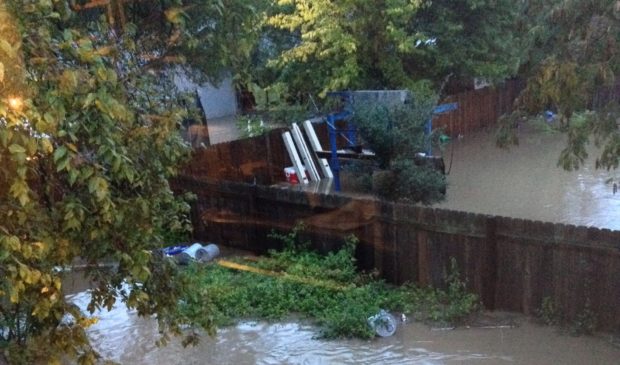ZAP briefed on Onion Creek flooding and development
Thursday, October 29, 2020 by
Daniel Salazar Zoning and Platting commissioners were briefed last Tuesday on the effects of flooding on development in South Austin’s Onion Creek.
Kevin Shunk, the floodplain administrator in the city’s Watershed Protection Department, gave the presentation in response to questions from ZAP.
Shunk said Watershed is guided by the Land Development Code to make sure there are no adverse effects from development on flooding in Onion Creek, mainly through drainage and water quality reviews under the Development Services Department.
“We rely on DSD to be the reviewers to ensure that the development is occurring, whether that be Onion Creek or anywhere else … is complying with the LDC as it goes through the site plan or subdivision process,” Shunk said.
Shunk said the Watershed Protection Department does get involved in some environmental review when properties are in floodplains.
Commissioners wanted to know the overall impact of development on businesses, residents and infrastructure in Onion Creek, but Shunk said there shouldn’t be any impact under the LDC.
Shunk also said there are no flood level increases expected along Onion Creek due to planned development. But he said WPD is now updating its floodplains after the federal Atlas 14 rainfall study indicated that perceived flood risk in Austin is higher than previously thought.
Shunk said the city owns 99 percent of properties in the buyout area of Lower Onion Creek, and 82 percent in Upper Onion.
“That is a very active buyout project area,” Shunk said. “We are purchasing lots daily.”
The updated floodplain studies will be provided to the Federal Emergency Management Agency, which will use the new data to set flood insurance rates.
The city’s process will conclude by late 2022 and the FEMA process will run to late 2024, Shunk said.
Shunk recommended that residents call 311 if they have concerns that nearby development is impacting their property.
Commissioners thanked Shunk for the presentation, although Commissioner David King said he was worried that federal and local funds to buy out flood-prone properties may be harder to come by because of the Covid-19 pandemic.
Photo showing flooding during the 2013 Halloween Flood made available through a Creative Commons license.
The Austin Monitor’s work is made possible by donations from the community. Though our reporting covers donors from time to time, we are careful to keep business and editorial efforts separate while maintaining transparency. A complete list of donors is available here, and our code of ethics is explained here.
You're a community leader
And we’re honored you look to us for serious, in-depth news. You know a strong community needs local and dedicated watchdog reporting. We’re here for you and that won’t change. Now will you take the powerful next step and support our nonprofit news organization?








